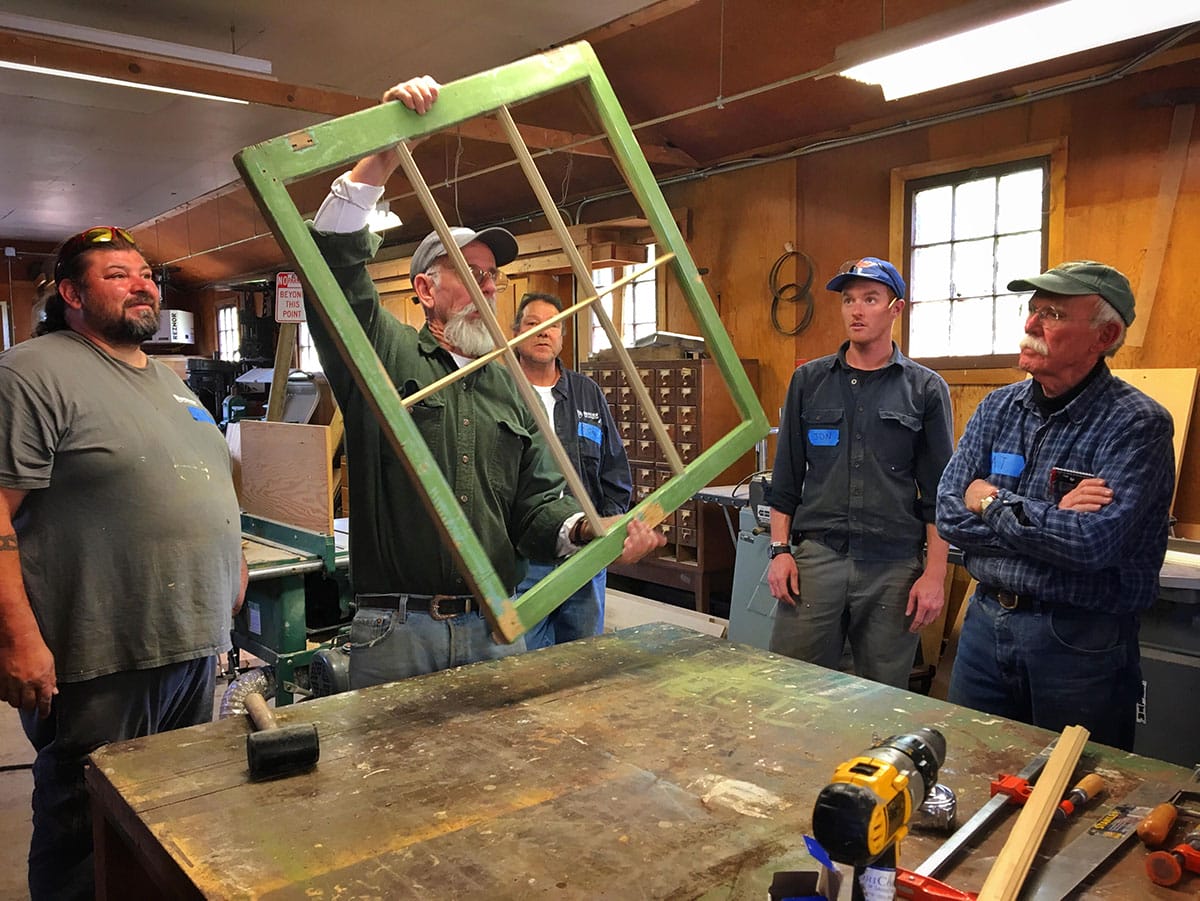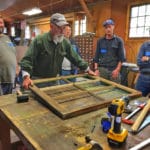
For most of us, when we think of historic preservation, restoring windows doesn’t pop to the top of the list.
But Shannon Dennison, Cultural Resources Administrator for Denver Mountain Parks, argues that in the case of the Red Rocks CCC camp, windows are one of the most important features.
At first glance these buildings – 15 long, skinny buildings with green roofs and brown clapboard siding – look kind of like a summer camp. Sitting just south of the famous Red Rocks Amphitheatre near Morrison, the original buildings were barracks and their supporting buildings, like a mess hall and bath house, for employees of the Civilian Conservation Corp and have as many as 28 windows in each barrack.
For the 200 young men buttoned up in wool uniforms, spending their days methodically constructing Red Rocks Amphitheatre, the windows would have been incredibly important for keeping them comfortable.
But to the untrained eye, they’re suspiciously simple for an important historical building. Yet it’s precisely that simplicity that makes their windows so important.
“Because these buildings are architecturally quite simple,” Ms. Dennison said, “their rows upon rows of historic windows are a character-defining feature of the entire camp.”
The Red Rocks CCC campus is one of the most intact CCC camps in the country and is a National Historic Landmark, the highest honor a historical building can get.
So when Denver Mountain Parks, in partnership with Denver Mountain Parks Foundation and HistoriCorp, turned their attention to breathing new life into the Red Rocks CCC campus, the windows were the natural place to start.
Rehabilitation Begins with a Window Workshop
The first phase in the rehabilitation of the camp began with just one building – Barrack Building 1, which will become the new headquarters of HistoriCorp upon completion.
Working with HistoriCorps, window experts, and a preservation carpenter, Ms. Dennison recently organized the first-ever Window Restoration Workshop within the Denver Mountain Parks to understand the techniques involved in restoring historic windows so future work can be done entirely in-house by Denver Mountain Parks maintenance staff.
Typically, maintenance projects are as efficient and cost-effective as possible, often at the expense of quality and historical authenticity. “In this case,” Ms. Dennison said, “that’s not quite our priority and we want to shift that philosophy to one of intention and a preservation ethic. Historic preservation is rarely the fastest or most efficient method in the short term, but we’ll be able to get another 50 years out of these windows by restoring them instead of replacing them with modern materials.”
Taking part in preserving a little-known, but very important aspect of these historic buildings and learning how to make informed choices on a restoration project turned out to be both fun and educational for everyone involved.
“The staff is taking personal pride in the restoration of these windows,” said Ms. Dennison, “and they’re giving their very best back to these buildings.”
How to Preserve a Historic Window
To begin, all the original wood-cased windows were first removed and examined individually. Most of the frames were in good condition, with a few containing spots of rot from water exposure. These areas were carefully cut out and repaired with original wood from other non-salvageable windows from the Red Rocks site. Once replaced, sanded and painted, there’s no evidence there was ever a weak spot. By using original, historical materials, the integrity of the site is maintained.
Of course, not everything is reusable. The distinctive thin slices of wood that crisscross these classic windows, called muntins, were all in poor shape and were completely removed. Their replacements were carefully replicated by a local mill in Denver, with particular care on the style and molding profile. Each muntin was then custom fitted to each historic window.
It was a similar story with the hardware. Although all the original pieces were salvaged, there wasn’t enough of them in good condition to restore and reuse. In keeping with the long-term view of this preservation project, these pieces were saved for other, future projects around the Denver Mountain Parks historic buildings. For Barrack Building 1, replica hardware was purchased and installed.
The wood frames and muntins were then freshly painted using traditional linseed oil paint. Linseed oil paint, which has a reputation of preserving the wood it’s on, fell out of popularity in the years since the CCC used it in favor of petroleum-based paint products. But keeping historical accuracy was important to this project, and the naturally pigmented traditional paint was tracked down and applied.
Windows Are Just the Beginning
With this project, Denver Mountain Parks is presenting a good example of how historic preservation can be done using the historic materials on site and a team of enthusiastic staff and volunteers.
Once the rehabilitation of the Red Rocks campus is complete, the hope is to replicate the process throughout other Denver Mountain Parks historic buildings and properties. To help ensure we achieve the successful preservation of these important landmarks, please consider making a contribution to the Denver Mountain Parks Foundation.
Article By Danielle Vick




